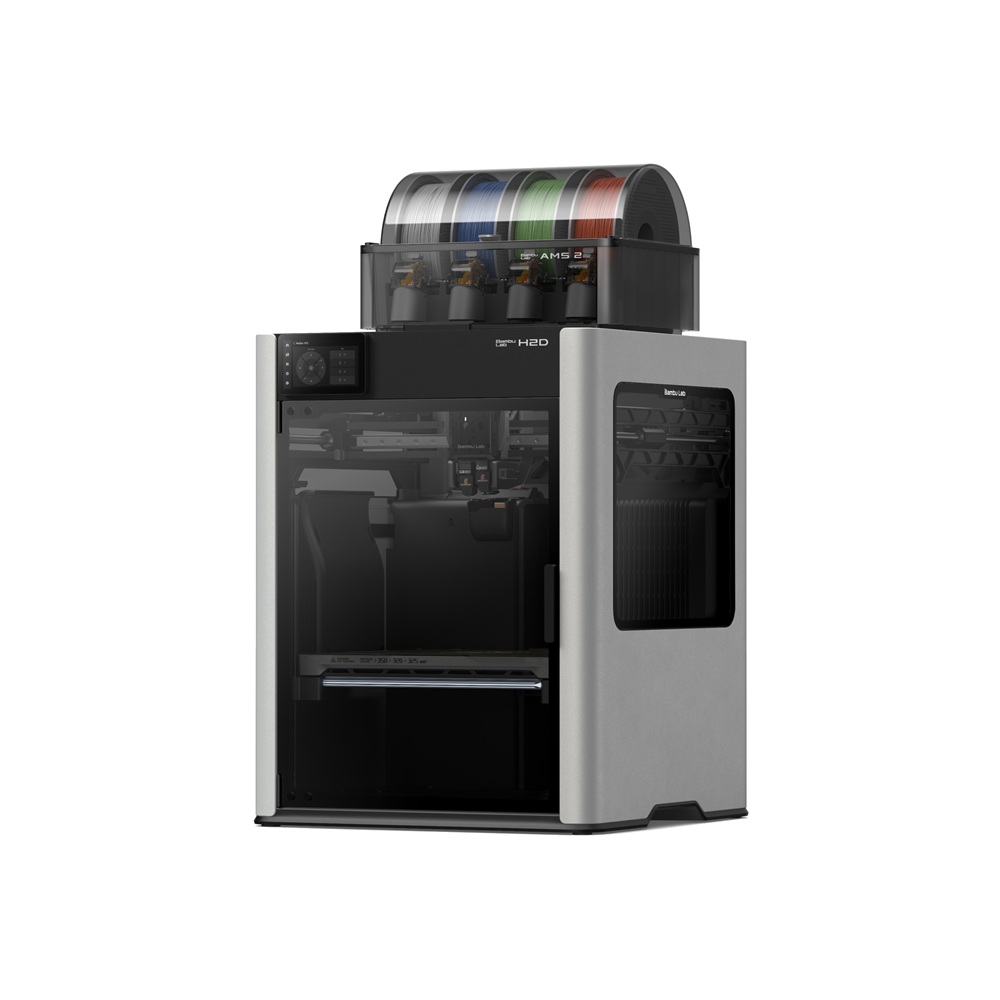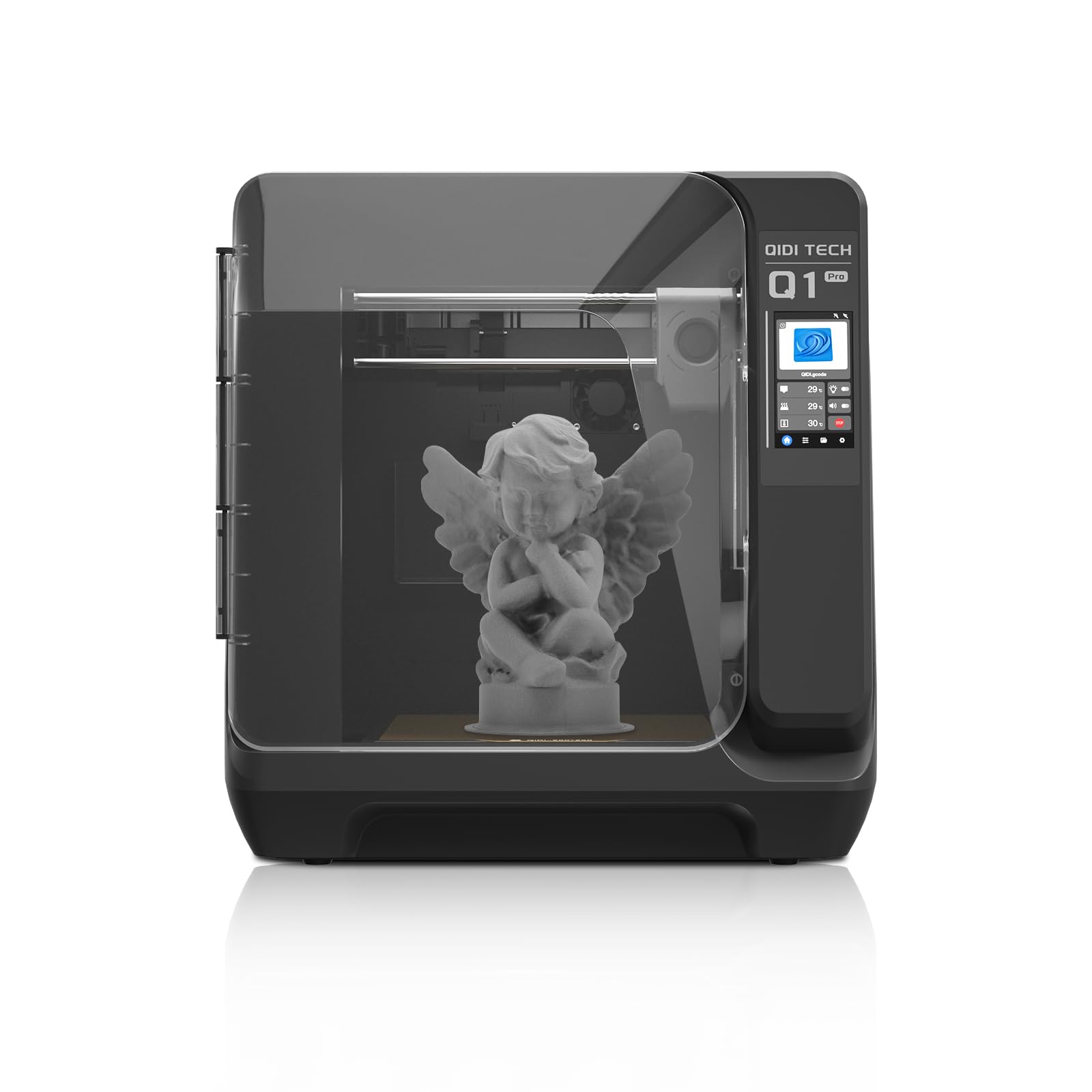Compare H2D vs Q1 PRO
Comparison between the best 3D printers
Choose the best 3D printer at the best price. The cheapest 3D printers are here.
Buy a 3D printer here with 3D Fila.
 |
 |
|
| Model | H2D |
Q1 PRO[BUY Q1 PRO] |
| Printing Material | Filament | Filament |
| Buy Filament for Bambu Lab H2D | Buy Filament forQIDI Q1 PRO | |
| Estimated price | $1899,00 | $449,00 |
| Manufacturer | Bambu Lab | QIDI |
| Release Year | 2025 | 2024 |
| Print Volume [mm] | 350x320x325 | 245x245x245 |
| Printer Size [mm] | 492x514x626 | 467x477x489 |
| Weight [kg] | 42,3 | 20 |
| Power Loss Recovery | YES | YES |
| Enclosed printer | YES | YES |
| Bed Leveling | Automatic | Automatic |
| Filament End Sensor | YES | YES |
| Bed type | Heated | Heated |
| Power supply system | Direct Drive | Direct Drive |
| Standard nozzle | 0,4 | 0,4 |
| Maximum Nozzle Temperature [°C] | 350 | 350 |
| Maximum Bed Temperature [°C] | 120 | 120 |
| Maximum printing speed [mm/s] | 600 | 600 |
| Filament holder | YES | YES |
| Camera for supervision | YES | YES |
| Recommended filaments | PLA, PETG, ABS, ASA, TPU, PVA, Nylon (PA) | PLA、ABS、ASA、PETG、TPU、PC、PA、PA-CF、PET-CF、PAHT-CF etc. |
| Recommended slicers | Bambu Studio | QIDI Slicer/Cura/Simplify 3D/ORCA/PRUSA Slicer |
| Maximum Resolution [mm] | 0,01 | 0,1 |
| Processor | Cortex-A53,64-bit Processor | |
| Display | Touchscreen 5'' | Touchscreen 4,3'' |
| Power Supply | 350 W | |
| Connectivity | Wifi, Bambu bus, Cartão SD | WiFi/USB Flash Drive/Ethernet Cable |
| Operating systems | Windows, Mac, Linux | Windows, Linux, Macbook |
| Date of registration in the system | 2025-03-31 | 2024-07-09 |
| Release date | 2025 | 2024 |
| Extra features | Bambu Labs H2D combines high-speed 3D printing with a chamber heated up to 65 °C, dual extrusion with automatic nozzle switching, an AMS for filament drying and exchange, and AI sensors that detect failures. It offers optional laser and digital cutting capabilities, features intelligent calibration through computer vision, vibration control, enhanced fire safety, and real-time camera monitoring. | The QIDI Q1 Pro 3D printer stands out for its Core XY structure and heating chambers that reach up to 60ºC, ideal for advanced materials such as ABS and Nylon. It features Klipper firmware, an automatic leveling system, a high-flow extruder with a double metal nozzle and a hotend that reaches 350ºC. It offers connectivity via Wi-Fi, USB and Ethernet, as well as a 1080p camera for remote monitoring and an intuitive touchscreen for easy operation. |
| Support for multiple colors and materials (AMS and CFS) | YES | NO |
Notes * |
||
| Cost-benefit | 7 / 10 | 8 / 10 |
| Hardware | 8 / 10 | 5.4 / 10 |
| Tela | . | . |
| Print volume | 4 / 10 | 3 / 10 |
| Performance | 5 / 10 | 5 / 10 |
| [BUY Q1 PRO] |
Conclusion |
| In conclusion, when comparing the Bambu Lab H2D and the QIDI Q1 Pro, the choice greatly depends on the user’s specific needs and budget. The Bambu Lab H2D, while significantly more expensive, offers superior printing capabilities, larger build volume, and advanced features such as dual extrusion, AI sensors for detecting failures, and the ability to support multiple colors and materials, making it suitable for professional and demanding applications. Its additional functionalities, like intelligent calibration and enhanced fire safety, reflect a commitment to high performance and reliability. On the other hand, the QIDI Q1 Pro presents a more budget-friendly option. With solid features for its price point, it is effective for a variety of materials, including advanced filaments. The Q1 Pro's Core XY structure, connectivity options, and a user-friendly interface with remote monitoring capabilities make it an appealing choice for hobbyists and beginners looking for quality without the high price tag. Ultimately, while the H2D may offer more in terms of advanced features and capacity, the QIDI Q1 Pro presents an exceptional cost-benefit ratio for users seeking efficiency and ease of use in 3D printing. Users should assess their specific project requirements, printing frequency, and budget constraints to determine which printer aligns best with their needs. |

